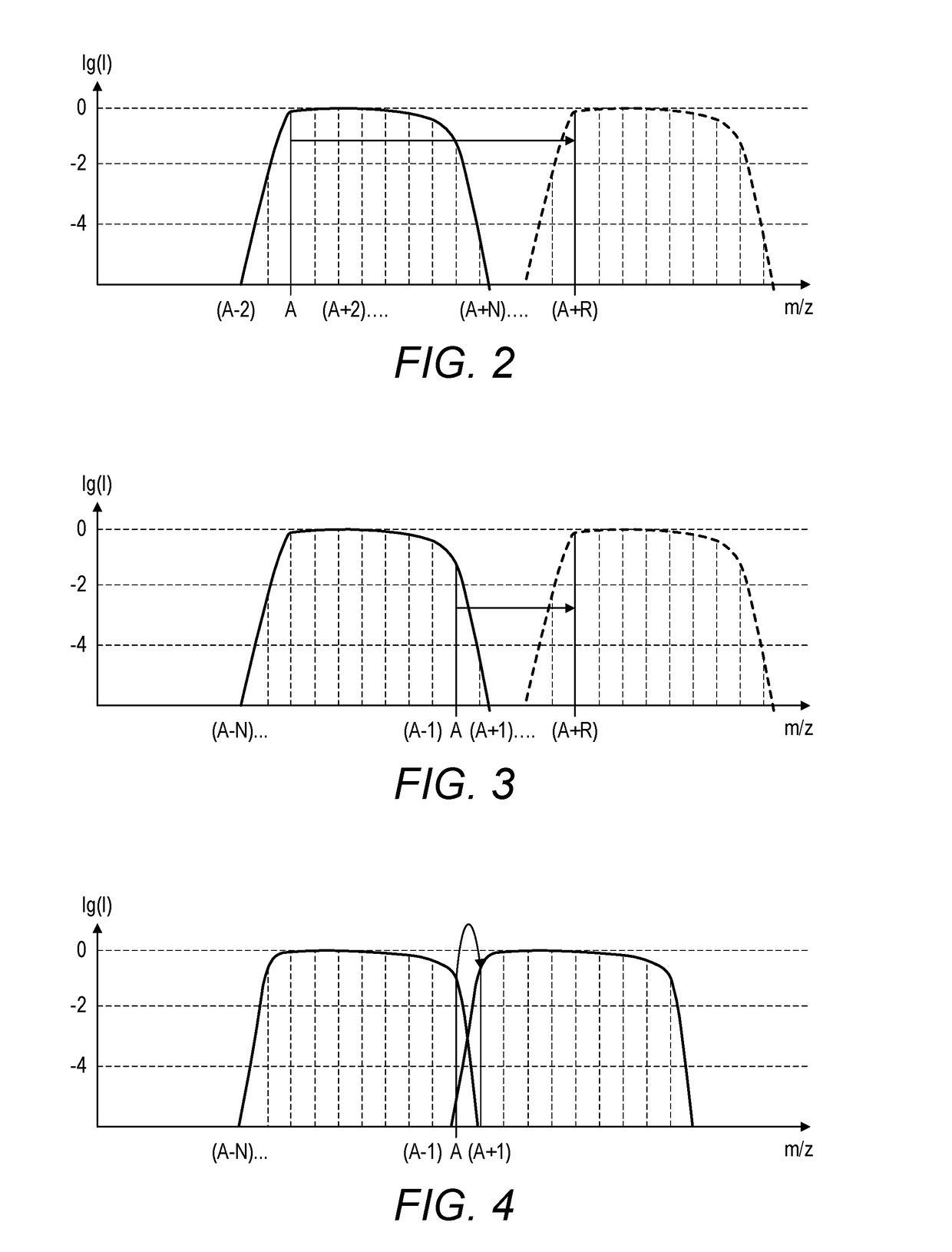Mass spectrometer
a mass spectrometer and mass spectrometer technology, applied in the field of mass spectrometers, can solve the problems of high cost, complicated instruments, and significant complication of instrument layou
- Summary
- Abstract
- Description
- Claims
- Application Information
AI Technical Summary
Benefits of technology
Problems solved by technology
Method used
Image
Examples
Embodiment Construction
[0022]Referring first to FIG. 1, there is depicted a schematic embodiment of a ICP mass spectrometer, comprising: an ICP torch 10; a sampler cone 20; a skimmer cone 30; ion optics 40; a first (Q1) mass filter 50; a reaction cell (Q2) 60; a differentially pumped aperture 70; a second (Q3) mass filter 80; and an ion detector 90. The Q3 mass filter 80 may be considered a mass analyzer or a part of a mass analyzer. In this preferred embodiment, ions are produced in the ICP torch 10, introduced into vacuum via sampler 20 and skimmer 30, transported through (bending) ion optics 40 and selected by Q1 quadrupole mass filter 50. It will be noted that Q1 mass filter 50 is relatively short in comparison with Q2 reaction cell 60 and Q3 mass filter 80, and is schematically depicted so. Moreover, the vacuum conditions of the Q1 mass filter 50 are less demanding than for the subsequent stages. Here, the ion optics 40 and Q1 mass filter 50 are operated at substantially the same pressure. Ions of th...
PUM
 Login to View More
Login to View More Abstract
Description
Claims
Application Information
 Login to View More
Login to View More - R&D
- Intellectual Property
- Life Sciences
- Materials
- Tech Scout
- Unparalleled Data Quality
- Higher Quality Content
- 60% Fewer Hallucinations
Browse by: Latest US Patents, China's latest patents, Technical Efficacy Thesaurus, Application Domain, Technology Topic, Popular Technical Reports.
© 2025 PatSnap. All rights reserved.Legal|Privacy policy|Modern Slavery Act Transparency Statement|Sitemap|About US| Contact US: help@patsnap.com



